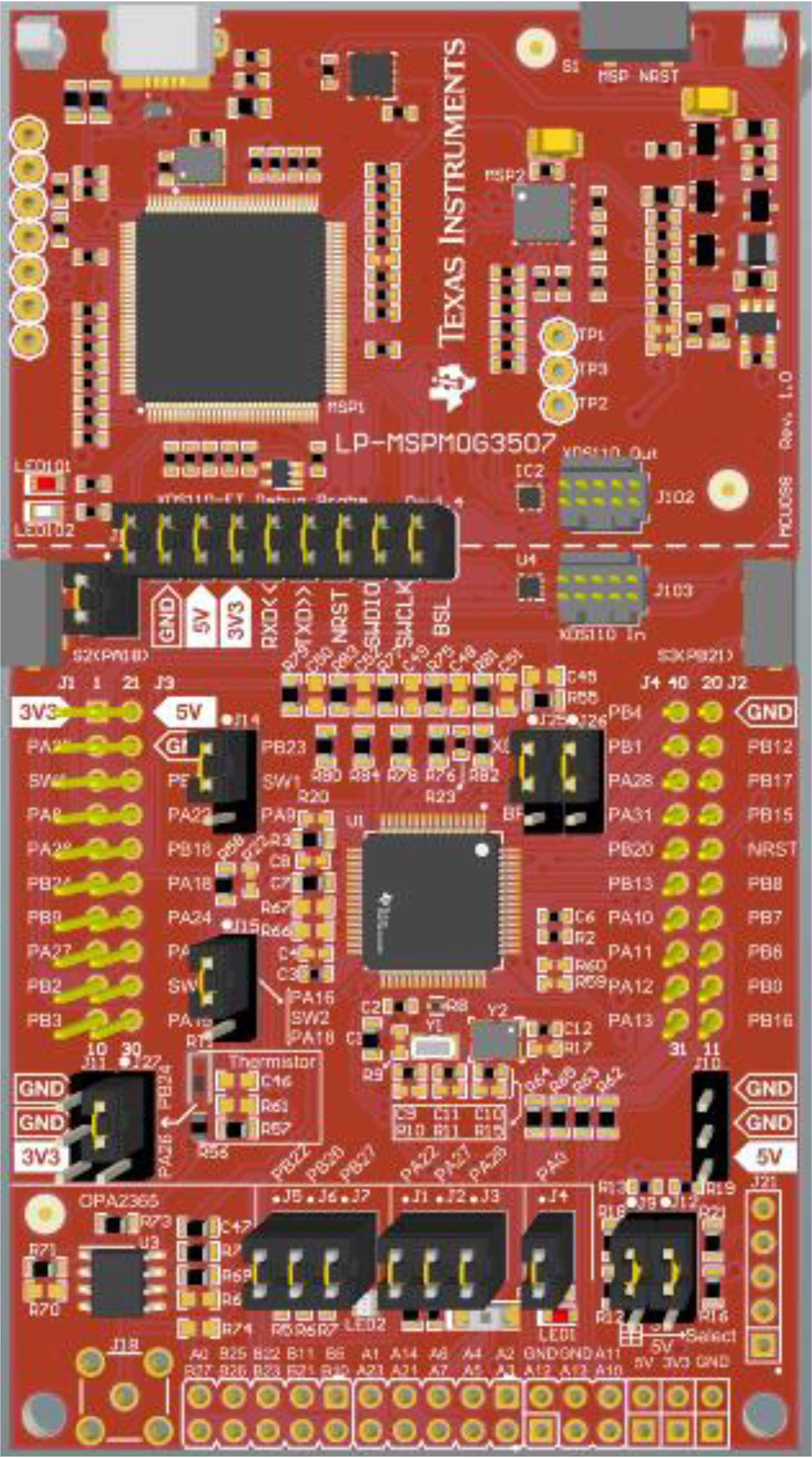SLAU929 April 2024 MSPM0C1104 , MSPM0G3505 , MSPM0G3506 , MSPM0G3507 , MSPM0L1105 , MSPM0L1304 , MSPM0L1305 , MSPM0L1306
- 1
- Abstract
- Trademarks
- 1MSPM0 Portfolio Overview
- 2Ecosystem and Migration
- 3Core Architecture Comparison
- 4Digital Peripheral Comparison
- 5Analog Peripheral Comparison
- 6References
2.2 Hardware Ecosystem
LaunchPad development kits are the only evaluation modules for the MSPM0. LaunchPad kits are easy-to-use EVMs that contain everything needed to start developing on the MSPM0. This includes an onboard debug probe for programming, debugging, and measuring power consumption with EnergyTrace™ technology. MSPM0 LaunchPad kits also feature onboard buttons, LEDs, and temperature sensors among other circuitry. Rapid prototyping is simplified by the 40-pin BoosterPack™ plug-in module headers, which support a wide range of available BoosterPack plug-in modules. You can quickly add features like wireless connectivity, graphical displays, environmental sensing, and more.
- LP-MSPM0G3507 LaunchPad development kit
- LP-MSPM0L1306 LaunchPad development kit
- LP-MSPM0C1104 Launchpad development kit
 Figure 2-2 LP-MSPM0G3507 LaunchPad
Development Kit
Figure 2-2 LP-MSPM0G3507 LaunchPad
Development Kit